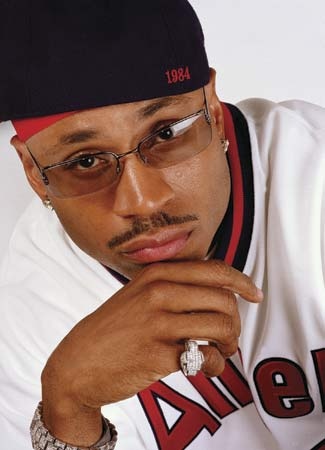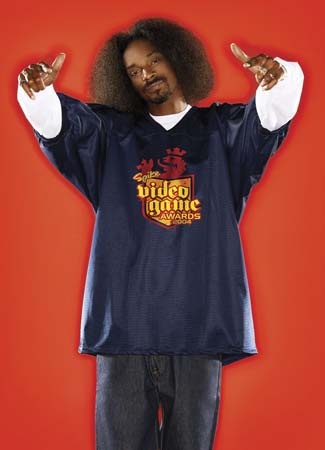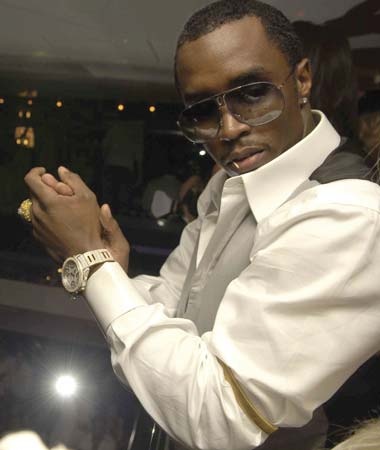hip-hop
cultural movement
 cultural movement that attained widespread popularity in the 1980s and '90s; also, the backing music for rap, the musical style incorporating rhythmic and/or rhyming speech that became the movement's most lasting and influential art form.
cultural movement that attained widespread popularity in the 1980s and '90s; also, the backing music for rap, the musical style incorporating rhythmic and/or rhyming speech that became the movement's most lasting and influential art form.Although widely considered a synonym for rap music, the term hip-hop refers to a complex culture comprising four elements: deejaying (disc jockey), or “turntabling”; rapping, also known as “MCing” or “rhyming”; graffiti painting, also known as “graf” or “writing”; and “B-boying,” which encompasses hip-hop dance, style, and attitude, along with the sort of virile body language that philosopher Cornel West (West, Cornel) described as “postural semantics.” Hip-hop originated in the predominantly African American, economically depressed South Bronx section of New York City in the late 1970s. As the hip-hop movement began at society's margins, its origins are shrouded in myth, enigma, and obfuscation.
Graffiti and break dancing, the aspects of the culture that first caught public attention, had the least lasting effect. Reputedly, the graffiti movement was started about 1972 by a Greek American teenager who signed, or “tagged,” Taki 183 (his name and street, 183rd Street) on walls throughout the New York City subway system. By 1975 youths in the Bronx, Queens, and Brooklyn were stealing into train yards under cover of darkness to spray-paint colourful mural-size renderings of their names, imagery from underground comics and television, and even Andy Warhol (Warhol, Andy)-like Campbell's soup cans onto the sides of subway cars. Soon, influential art dealers in the United States, Europe, and Japan were displaying graffiti in major galleries. The Metropolitan Transit Authority responded with dogs, barbed-wire fences, paint-removing acid baths, and undercover police squads.
The beginnings of the dancing, rapping, and deejaying components of hip-hop were bound together by the shared environment in which these art forms evolved. The first major hip-hop deejay was DJ Kool Herc (Clive Campbell), an 18-year-old immigrant who introduced the huge sound systems of his native Jamaica to inner-city parties. Using two turntables, he melded percussive fragments from older records with popular dance songs to create a continuous flow of music. Kool Herc and other pioneering hip-hop deejays such as Grand Wizard Theodore, Afrika Bambaataa, and Grandmaster Flash (Grandmaster Flash and the Furious Five) isolated and extended the break beat (the part of a dance record where all sounds but the drums drop out), stimulating improvisational dancing. Contests developed in which the best dancers created break dancing, a style whose repertoire of acrobatic and occasionally airborne moves included the “helicopter,” whereby dancers spun on the tops of their heads.
In the meantime, deejays developed new techniques for turntable manipulation. Needle dropping, created by Grandmaster Flash, prolonged short drum breaks by playing two copies of a record simultaneously and moving the needle on one turntable back to the start of the break while the other played. Sliding the record back and forth underneath the needle created the rhythmic effect called “scratching.”
Kool Herc was widely credited as the father of modern rapping for his spoken interjections over records, but among the wide variety of oratorical precedents cited for MCing are the epic histories of West African griots, talking blues songs, jailhouse toasts (long rhyming poems recounting outlandish deeds and misdeeds), and the dozens (the ritualized word game based on exchanging insults, usually about members of the opponent's family). Other influences cited include the hipster-jive announcing styles of 1950s rhythm-and-blues deejays such as ; the black power poetry of Amiri Baraka (Baraka, Amiri), Gil Scott-Heron, and the Last Poets; rapping sections in recordings by Isaac Hayes and George Clinton; and the Jamaican style of rhythmized speech known as toasting.
Rap first came to national prominence in the United States with the release of the Sugarhill Gang's song "Rapper's Delight" (1979) on the independent African American-owned label Sugar Hill. Within weeks of its release, it had become a chart-topping phenomenon and given its name to a new genre of pop music. The major pioneers of rapping were Grandmaster Flash and the Furious Five, Kurtis Blow, and the Cold Crush Brothers, whose Grandmaster Caz is controversially considered by some to be the true author of some of the strongest lyrics in "Rapper's Delight." These early MCs and deejays constituted rap's old school.
 In the mid-1980s the next wave of rappers, the new school, came to prominence. At the forefront was Run-D.M.C., a trio of middle-class African Americans who fused rap with hard rock, defined a new style of hip dress, and became staples on as they brought rap to a mainstream audience. Run-D.M.C. recorded for Profile, one of several new labels that took advantage of the growing market for rap music. Def Jam featured three important innovators: LL Cool J, rap's first romantic superstar; the Beastie Boys (Beastie Boys, the), a white trio who broadened rap's audience and popularized digital sampling (composing with music and sounds electronically extracted from other recordings); and Public Enemy, who invested rap with radical black political ideology, building on the social consciousness of Grandmaster Flash and the Furious Five's "The Message" (1982).
In the mid-1980s the next wave of rappers, the new school, came to prominence. At the forefront was Run-D.M.C., a trio of middle-class African Americans who fused rap with hard rock, defined a new style of hip dress, and became staples on as they brought rap to a mainstream audience. Run-D.M.C. recorded for Profile, one of several new labels that took advantage of the growing market for rap music. Def Jam featured three important innovators: LL Cool J, rap's first romantic superstar; the Beastie Boys (Beastie Boys, the), a white trio who broadened rap's audience and popularized digital sampling (composing with music and sounds electronically extracted from other recordings); and Public Enemy, who invested rap with radical black political ideology, building on the social consciousness of Grandmaster Flash and the Furious Five's "The Message" (1982).Rap's classical period (1979–93) also included significant contributions from De La Soul—whose debut album on Tommy Boy, 3 Feet High and Rising (1989), pointed in a new and more playful direction—and female rappers such as Queen Latifah and Salt-n-Pepa, who offered an alternative to rap's predominantly male, often misogynistic viewpoint. Hip-hop artists from places other than New York City began to make their mark, including DJ Jazzy Jeff and the Fresh Prince (Will Smith) from Philadelphia; the provocative 2 Live Crew from Miami, Florida; and M.C. Hammer, from Oakland, California, who experienced short-lived but massive crossover success with a pop audience.
 The most significant response to New York hip-hop, though, came from Los Angeles, beginning in 1989 with N.W.A.'s dynamic album Straight Outta Compton. N.W.A. (Niggaz With Attitude) and former members of that group—Ice Cube, Eazy E, and producer Dr. Dre—led the way as West Coast rap grew in prominence in the early 1990s. Their graphic, frequently violent tales of real life in the inner city, as well as those of Los Angeles rappers such as Ice-T (remembered for his 1992 single "Cop Killer" ) and Snoop Doggy Dogg and of East Coast counterparts such as Schoolly D, gave rise to the genre known as gangsta rap.
The most significant response to New York hip-hop, though, came from Los Angeles, beginning in 1989 with N.W.A.'s dynamic album Straight Outta Compton. N.W.A. (Niggaz With Attitude) and former members of that group—Ice Cube, Eazy E, and producer Dr. Dre—led the way as West Coast rap grew in prominence in the early 1990s. Their graphic, frequently violent tales of real life in the inner city, as well as those of Los Angeles rappers such as Ice-T (remembered for his 1992 single "Cop Killer" ) and Snoop Doggy Dogg and of East Coast counterparts such as Schoolly D, gave rise to the genre known as gangsta rap. By the late 1990s hip-hop was artistically dominated by the Wu-Tang Clan, from New York City's Staten Island, whose combination of street credibility, neo-Islamic mysticism, and kung fu lore made them one of the most complex groups in the history of rap; by Sean (“Puff Daddy”) Combs (Diddy), performer, producer, and president of Bad Boy Records, who was responsible for a series of innovative music videos; and by the Fugees, who mixed pop music hooks with politics and launched the solo careers of Wyclef Jean and Lauryn Hill.
By the late 1990s hip-hop was artistically dominated by the Wu-Tang Clan, from New York City's Staten Island, whose combination of street credibility, neo-Islamic mysticism, and kung fu lore made them one of the most complex groups in the history of rap; by Sean (“Puff Daddy”) Combs (Diddy), performer, producer, and president of Bad Boy Records, who was responsible for a series of innovative music videos; and by the Fugees, who mixed pop music hooks with politics and launched the solo careers of Wyclef Jean and Lauryn Hill. Jay-Z, another New York City rapper, moved from gangsta concerns to a hook-laden version of pop rap that made him one of the most popular hip-hop artists of the early 21st century, rivaled by Nas, another New Yorker, and Common, from Chicago. Less commercially successful but revered by the critics, the jazz-influenced Roots, from Philadelphia, eschewed sampling for instrumental accompaniment and a live sound. Meanwhile, aided by producer Timbaland, Missy Elliot expanded upon the tradition of earlier female rappers. The fusion of rap and various rock-related genres also brought attention to a variety of groups, including OutKast, a duo from Atlanta, Georgia, who topped the charts by mixing hip-hop, funk, and pop with flamboyant performance and dress; Rage Against the Machine, whose “rapcore” melded rap, hard-core punk, and agitprop; and Kid Rock, who struck a “white trash” pose while combining rap and heavy metal. Another white rapper, the controversial Eminem, a protégé of Dr. Dre, outraged some, inspired others, and sold millions of albums grounded in clever rhymes and infectious beats.
Although long believed to be popular primarily with urban African American males, hip-hop became the best-selling genre of popular music in the United States in the late 1990s (at least partly by feeding the appetite of some white suburbanites for vicarious thrills). Its impact was global, with formidable audiences and artist pools in cities such as Paris, Tokyo, Sydney, Cape Town, London, and Bristol, England (where the spin-off “trip-hop” originated). It also generated huge sales of products in the fashion, liquor, electronics, and automobile industries that were popularized by hip-hop artists on cable television stations such as MTV and The Box and in hip-hop-oriented magazines such as The Source and Vibe.
A canny blend of entrepreneurship and aesthetics, hip-hop was the wellspring of several staple techniques of modern pop music, including digital drumming and sampling (which introduced rap listeners to the music of a previous generation of performers, including Chic, Parliament-Funkadelic, and James Brown (Brown, James), while at the same time creating copyright controversies). It has been argued that, because the hip-hop art form and audience demand authenticity, rap has withstood dilution by corporate commercial interests better than any previous African American music.
Additional Reading
David Toop, Rap Attack 3: African Rap to Global Hip Hop (1999), is probably the book most successful at revealing hip-hop's debts to earlier forms of African American popular music. In answer to the question of whether hip-hop lyrics are a form of poetry, Lawrence A. Stanley (ed.), Rap: The Lyrics (1992), allows readers to make up their own minds by presenting the writings of hip-hop's greatest lyricists. Tricia Rose, Black Noise: Rap Music and Black Culture in Contemporary America (1994), argues that technology, urban sociology, race politics, and feminism have intersected in hip-hop to foment a hotbed of postmodern artistry and controversy. Nelson George, Hip Hop America (1998), presents a serious fan's view of the long road hip-hop took from street fests to mainstream market profitability and semirespectability. Havelock Nelson and Michael A. Gonzales, Bring the Noise: A Guide to Rap Music and Hip-Hop Culture (1991), is a detailed introduction to the history of rap and a guide to the best recordings.
- New Zealand Political Reform League
- New Zealand short-tailed bat
- nexum
- Neyagawa
- Ney, Elisabet
- Neyman, Jerzy
- Ney, Michel, Duc D'elchingen, Prince De La Moskowa
- Neysa McMein
- Neyshābūr
- Nezahualcóyotl
- Neziqin
- Nez Percé
- neōteros
- Neşri
- Neẓāmī
- N.F.S. Grundtvig
- N.F. Simpson
- Ngada
- Ngaio Marsh
- Ngami, Lake
- Nganasan
- Ngaoundéré
- Ngasaunggyan, Battle of
- Ngata, Sir Apirana Turupa
- Ngbandi